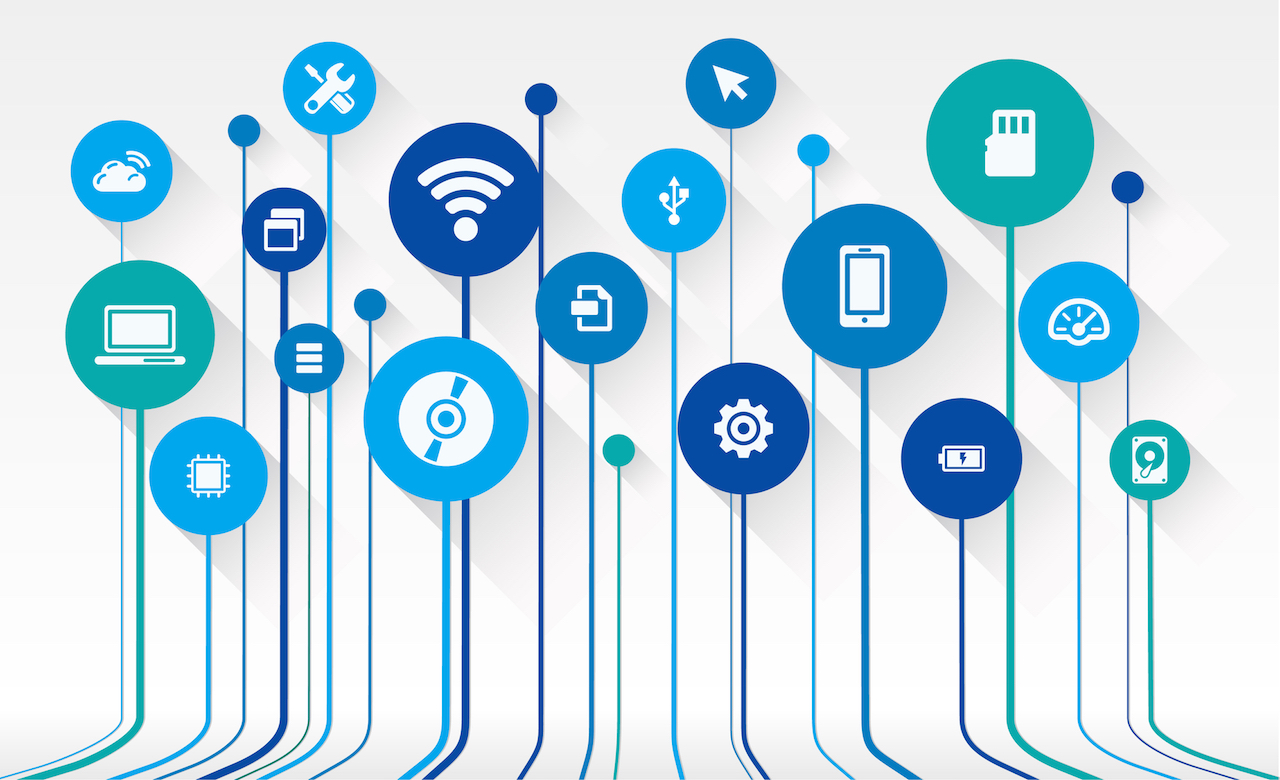Network Assessment can be a word as broad as the sky, so sometimes when an IT expert suggests doing a network assessment for your business, you may be thinking of your Internet speed and number of devices, while your expert is talking about infrastructure and power. The good news is that you are both right: A network assessment is a very general term that can include an assessment of any component of your network, whether that is your cabling, wireless coverage or the specs of your devices on the network. So, when you consider a network assessment, you should have a very detailed conversation with your trusted expert about what you are looking for and what you are trying to accomplish.
Many times, when network assessments are done there is a persistent issue that you cannot seem to get rid of, for example, your network seems slow in the afternoon. You already replaced all your PCs with new machines, increased your Internet speed and yet your employees complain about lagging and slowness. That is a perfect opportunity to take a good hard look at your network. How is your wireless coverage? How old is your switching equipment? Does your firewall have enough throughput? What applications are your employees mostly using? All these things can be delved into during a network assessment to help you get closer to the root of the problem, rather than adding expensive and unnecessary band aids.
However, you do not have to stumble over a problem to do a network assessment. On the contrary: a regular network assessment should be part of any comprehensive technology strategy. Especially, if you are planning big investments or a restructure. Get with your trusted expert and do a thorough analysis of your network, it will help you to identify your weaknesses, highlight your priorities and develop a technology strategy that will cover all aspects of your network and get it into shape for the long run.
Another thing to keep in mind is security. A network assessment can be focused on identifying weak links and possible threats to your security and point you into the right direction to remedy those before anything happens. While some industries, such as healthcare and banking, are already regulated and audited for their use of technology, many others are not. That means the safety of your data and your business solely relies on you! A network assessment dedicated to the security of your network every few years can keep your business safe and give you peace of mind.
Now, let’s go into detail about what can be covered as part of a network assessment. Keep in mind that this is a customized fit: some of these aspects may only need to be glanced at while others need a more detailed analysis. You can segment your network assessment, focusing on one or two specific aspects, depending on the projects you have coming up.
- Cabling & Infrastructure: Cabling is one of those things that often gets overlooked or neglected over the years. Once it’s in, it’s good to go, right? That is not necessarily true. Cabling, just as other technology continues to evolve and new standards are released as the industry becomes more effective. Make sure your trusted expert examines the type of cabling you have, the installation practices, how everything is terminated, labeled and organized. There are even performance tests you can do to make sure your Cat5e or 6 meet the current specifications. Your cabling infrastructure is the backbone of your network. Make sure you have a robust infrastructure that is professionally installed, otherwise any investments you make on the front-end may be a futile effort.
- Power and Grounding: As the storm season is upon us with thunderstorms and other weather, it is essential to follow best practices when it comes to power and grounding. Your trusted expert can examine your building and telecommunication facility grounds and help minimizing the damage in case lightning strikes.
- Battery Backup / UPS: This is related to the previous aspect of making sure you get power to your equipment. Especially when your network has undergone some growth, it is important to regularly check that your UPS devices are still performing as they should: make sure the power is conditioned, they are correctly set up and sized correctly to power the equipment you need for the amount of time needed. This will keep you running, not only through lightning strikes, but also through surges and any kinds of power outages.
- Physical and Network Security: You do not have to build a fortress to keep your data safe. Many times, simple measures such as a firewall and having policies in place of who has access to what level of data can help immensely. It is important to consider the physical location of your server, for example, and who has access to it. Is it in an unlocked back room or a utility closet with unsupervised access? Your trusted expert can help you develop policies and measures to enforce simple security practices. In addition, monitored security systems can protect your assets from intruders as well as environmental influences, such as fire and flooding. On the network side, a penetration test will give you information as to what exactly travels in and out of your network and any vulnerable devices you may have, so you can invest where needed.
- Internet Connectivity: Even if you sign up for 50 Mbps Internet, sometimes what you end up getting may only be 15 Mbps. A simple test can show you the speeds you are actually getting, as well as peaks and valleys over a week’s time and provide you with data that can help gauging your bandwidth needs and holding your provider accountable.
- Telecommunication Systems and Services: Phone Systems have evolved over the last 15 years as much as computers have. With offers ranging from traditional phone service to fully integrated VoIP solutions a professional assessment is crucial if you are looking to upgrade or to just get more out of your existing system. Oftentimes, there may be lines and handsets that have been dormant for a while but are still being paid for or you may find that the newer solutions could increase functionality and productivity while at the same lower cost. If your phone system is more than 10 years old, you need to take a good look at it.
- Switched and Wireless Networking: Along with your cabling infrastructure, your switches and APs determine how smooth your network runs, so doing a comprehensive overview on a regular basis is imperative. Performance tests can give you detailed information about whether equipment is correctly sized, possible bottlenecks, throughput, any bad ports or other issues with your network. And before you implement a wireless network, ask your trusted expert to do a heat map of your building, since layout and construction style can significantly influence your wireless network performance. A heat map will take everything into consideration and spit out suggestions on where exactly to place APs for most efficient coverage.
- Asset Detail and Risk Assessment: An easy way to do an asset assessment is using a network probe that will gather information over a period of time and provide a detailed report of all devices you have, their age, operating systems, specs, etc. Furthermore, it will also give you a risk assessment based on many metrics that measure vulnerability of your devices, such as expired passwords, unsupported OS, antivirus and patching, etc. This will help you standardize and justify new investments in the future.





